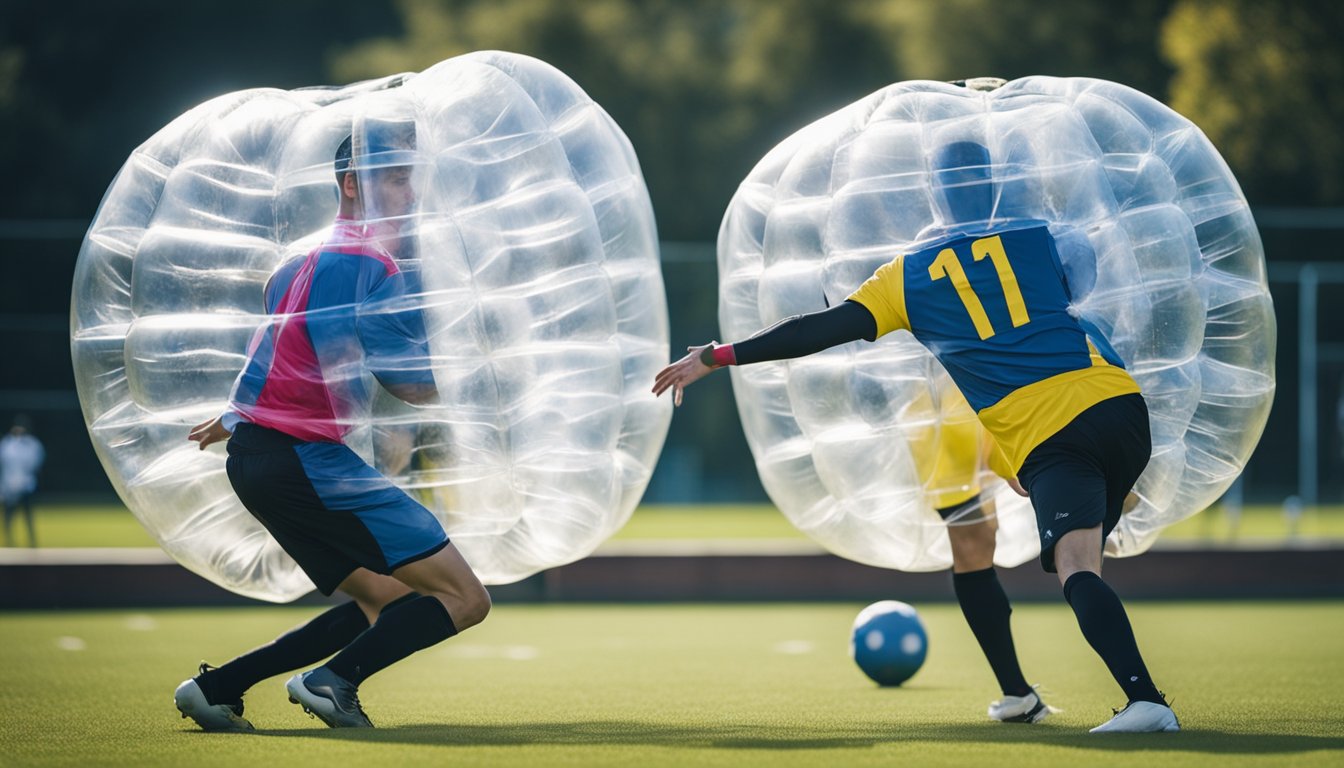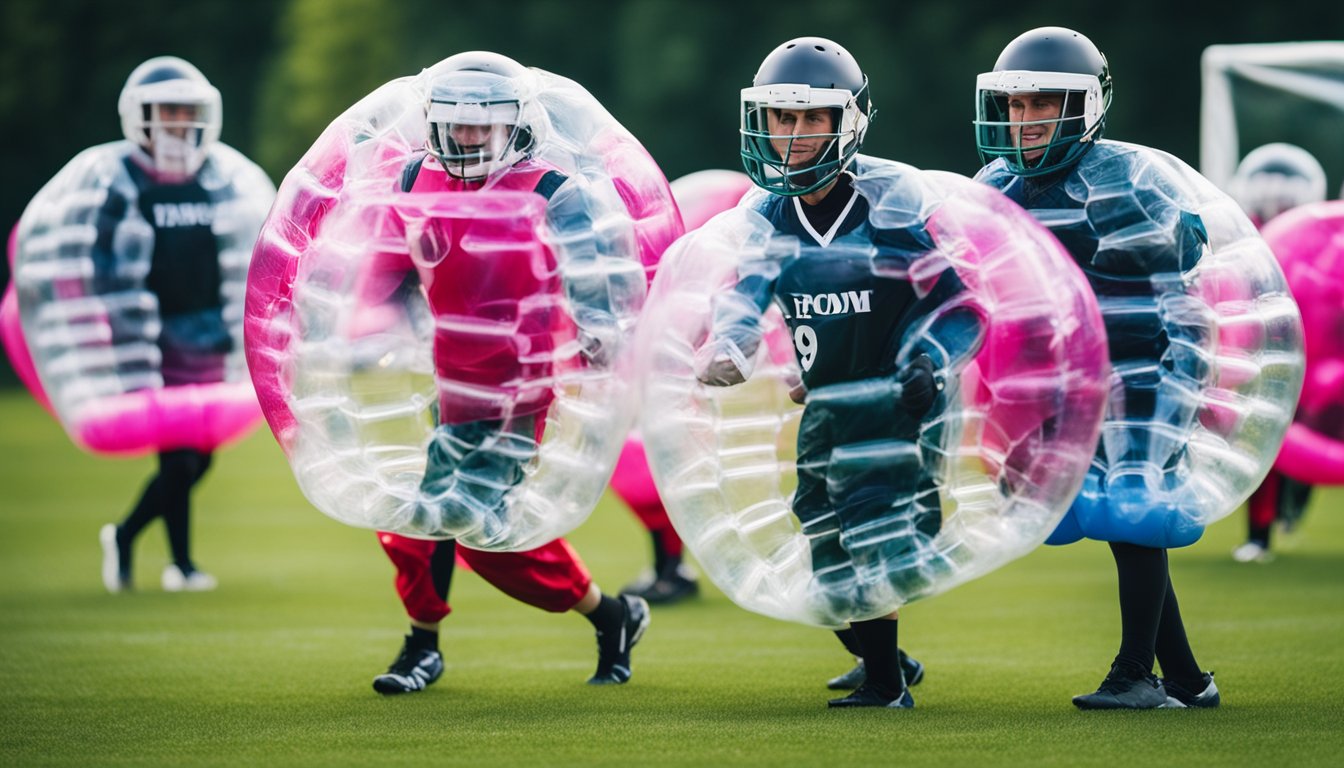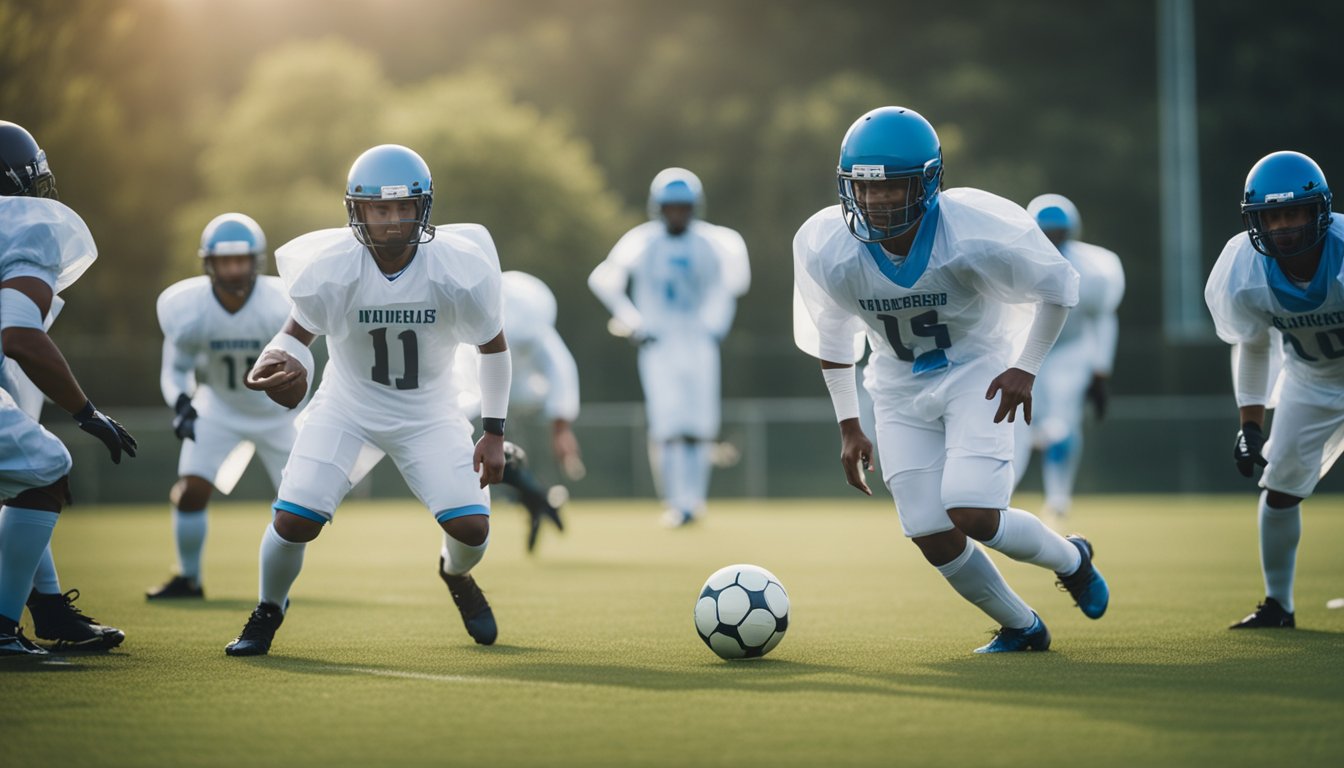Late updated: 03 Jan 2025 14:01
Written by: Emma Saunders
Bubble Football Vs Traditional Football: Exploring the Key Differences
Bubble football, sometimes known as zorb football or bubble soccer, has become an exciting twist on traditional football, captivating enthusiasts worldwide. While traditional football's primary aim is to score more goals than the opponent, bubble football introduces unique dynamics with players encased in inflatable bubbles, adding a fresh layer of fun and chaos. Originating from the creative minds of Henrik Elvestad and Johan Golden, this sport has quickly spread from New Zealand to the UK and USA, blending athletic challenges with laughter-filled tumble rounds.

Much of the intrigue in bubble football comes from comparing its rules and gameplay to traditional football. Unlike the classic 11-a-side football games held on expansive pitches, bubble football generally features smaller teams and shorter gameplay durations. Players navigate using large bubble suits, dramatically altering movement and contact strategies due to the inflatable protection. This setup often leads to exaggerated bounces and less conventional tactics, drawing in both families and competitive players seeking an alternative sporting experience.
The different safety aspects cannot be overlooked. While conventional football occasionally poses risks of injury from tackles, bubble football's padded bubble suits act as a safeguard, significantly reducing impact injuries and offering a more inclusive experience. This makes bubble football not just a sport, but a social activity cherished for its safety, engaging nature, and adaptability in various events, from corporate team-building to festive gatherings.
Key Takeaways
- Bubble football provides a light-hearted twist on traditional football.
- It features different gameplay dynamics due to protective bubble suits.
- Safety is enhanced compared to traditional football.
Key Differences in Gameplay and Rules

In exploring the differences between bubble football and traditional football, we must focus on unique aspects such as the equipment, the field setup, and how players interact on the pitch. Bubble football offers a playful yet challenging experience, whereas traditional football prioritises skill and strategy.
Equipment and Attire
In traditional football, players wear standard football kits, consisting of a jersey, shorts, and proper footwear. Safety gear such as shin guards is also essential to protect against injuries during tackles. In contrast, bubble football requires participants to wear inflatable bubbles, also referred to as zorb suits. These bubbles envelop the upper body, allowing for unexpected collisions with reduced risk of injury.
Appropriate footwear remains crucial in both sports for optimal performance. While traditional football requires boots for traction on grass, bubble football often sees players in trainers, especially on indoor surfaces. Often, knee pads are worn to add an extra layer of protection, given the sport's unpredictable and energetic nature.
Field and Match Structure
The typical playing field for traditional football is a large, rectangular grass pitch. It accommodates eleven players per team, and matches typically last 90 minutes. In bubble football, the field is usually smaller, aligning more with five-a-side football dimensions, which keeps the game fast-paced and engaging.
Game durations are generally shorter in bubble football, often split into several quick rounds. Scoring remains a primary goal in both sports, although the rules might not be as stringent in bubble football, focusing more on entertainment. Unlike traditional football, fouls and penalties in bubble football are minimal, reflecting its emphasis on fun and adventure.
Team Dynamics and Physicality
Teamwork and communication are pivotal in both football forms. Traditional football requires strategic collaboration, agility, and maintaining balance to execute plays successfully. It is a physically demanding sport that involves cardiovascular endurance and precise tactics.
Bubble football introduces a more chaotic gameplay style, where agility is challenged by the bulk of the bubble suits. Teams must adapt quickly, using the suits to bounce off opponents rather than conventional tackling. The unique physical dynamics often result in bouts of laughter, promoting a joyous exercise atmosphere. This unpredictability ensures that every match is an adventure requiring quick thinking and a good sense of humour.
Safety and Player Experience

When comparing bubble football and traditional football, the focus on safety and player enjoyment is paramount. Bubble football provides a unique experience with its emphasis on fun and light-heartedness, while maintaining strict safety protocols.
Ensuring Player Safety
In bubble football, safety measures are crucial due to the use of large inflatable orbs. These orbs, designed to absorb shocks, provide a layer of protection as players bounce and roll during play. A key component of safety in this sport involves following stringent safety precautions. Players should engage in warm-up exercises to prevent injuries and ensure they are physically ready.
Understanding fitness and weight restrictions is vital. Participants should play within their physical limits to avoid injury risk. Before beginning, hydration is important, so players must drink water to prepare for the game. Securing the help of a reputable provider is wise as they can offer essential advice and equipment checks.
Cultural Impact and Player Enjoyment
The heart of bubble football lies in its ability to generate laughter and comedy. The sight of players bouncing and tumbling within their bubbles creates an atmosphere of joy and thrill seldom found in traditional football.
This experience fosters camaraderie as we bond over shared moments of humour and exhilaration. Participants often recount the fun of trying to maintain balance while in motion. The cultural impact of bubble football centres on its light-hearted appeal. It breaks away from the competitiveness of traditional football, encouraging a more relaxed, enjoyable approach for all involved.
Frequently Asked Questions

In this segment, we delve into various aspects of bubble football, highlighting both the equipment and rules associated with its play. We also address safety considerations and strategic differences that set it apart from traditional football. Lastly, the evolution of bubble football over the years is explored, showcasing its unique development.
How is bubble football played compared to traditional football?
Bubble football retains the core objective of scoring goals, similar to traditional football. However, players wear inflatable bubbles, making physical contact safer and transforming the gameplay experience. This equipment alters movement, requiring players to adapt their playing style.
What equipment is required for playing bubble football?
Participants need large, inflatable bubbles that cover them from the knees upwards. These bubbles are crucial for safely engaging in contact plays. Players also wear standard athletic gear, such as sports shoes and comfortable clothing, to ensure free movement within the bubble.
Can you describe the key rule variations between bubble football and regular football?
One of the primary rule differences involves the level of physical contact. In bubble football, bumping into other players is a regular and encouraged part of the game. The offside rule typically does not apply, and matches are often shorter to accommodate the physical intensity of wearing the bubble.
What are the safety considerations when participating in bubble football?
Safety is paramount, with guidelines that include ensuring equipment is properly fitted and inflated. Playing surfaces should be free of hazards, and participants are advised to wear appropriate gear. Supervisors or referees often oversee matches to enforce play rules and ensure player safety.
In what ways do the strategies differ between bubble football and traditional football?
Strategies in bubble football often revolve around leveraging the bubble for both offensive and defensive manoeuvres. Players must adjust their balance and positioning, using the bubble's momentum to their advantage in tackles and positioning on the field. Unlike traditional football, finesse takes a backseat to strategic bounces and impacts here.
How has bubble football evolved from its traditional football roots?
Bubble football originated as a fun, casual variation of traditional football. Over time, it has gained popularity in recreational leagues and events, becoming a staple in many sporting activities. Its evolution highlights a shift towards integrating physical play with entertainment, carving a niche separate from conventional football practices.
